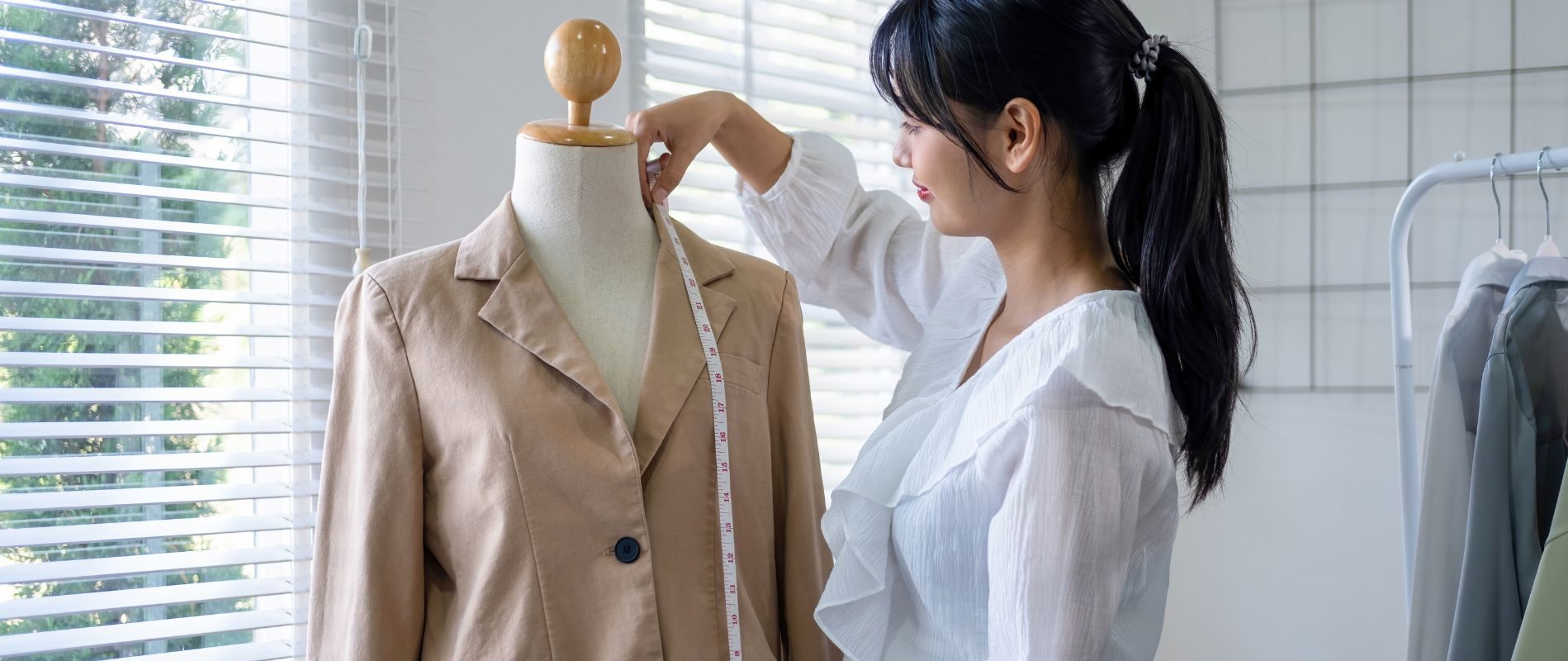When you’re shopping for second-hand clothing online, knowing your exact size can feel like a guessing game. Start by grabbing a flexible tape measure and recording your bust, waist, and hip measurements. These numbers are your first step to navigating the often inconsistent world of vintage and pre-owned fashion. But don’t stop there. Each brand has its own sizing quirks, and a size medium in one label might be a small in another. To make things more complex, older garments often follow different sizing standards altogether. Curious about how to ensure a perfect fit? Let’s explore further.
Measure Your Body
To accurately measure your body, grab a flexible tape measure or a piece of string and measure key areas such as your bust, waist, hips, and inseam.
Make sure the tape is snug but not too tight; you don’t want to feel like a squeezed tube of toothpaste! Wear fitted clothing or undergarments for the most accurate results, and write down these measurements.
Having these numbers handy means you’ll know exactly what to look for when you’re browsing secondhand clothing online. Trust me, knowing your measurements is like having a secret weapon for finding that perfect fit.
Keep in mind that sizes can vary wildly between brands and even styles, thanks to vanity sizing. Vanity sizing is when brands label clothes with smaller sizes to make you feel better about yourself. It’s kind of sneaky but knowing your actual measurements can help you navigate this.
Also, remember that clothing sizes have changed over the years, so a vintage size 8 mightn’t fit like a modern size 8.
Regularly remeasure your body, because, let’s face it, our bodies change. With these tips, you’ll have a much easier time scoring some fabulous secondhand clothing!
Use Size Charts
While knowing your body measurements is a powerful tool, pairing them with size charts can further streamline your secondhand shopping experience. When you measure your body, you set the stage for finding that perfect, accurate fit.
But here’s the magic trick: size charts. These charts are your best friend when shopping online, especially for secondhand clothing.
Sizes can be a wild ride, varying from one brand to another, and even more so when you’re diving into older, vintage pieces. The size 12 from your grandma’s 1958 dress might actually be a size 6 today. Crazy, right? That’s why size charts are essential.
Consult the specific size chart provided by the brand of the secondhand item you’re eyeing. This ensures you’re not just guessing, but making an informed choice.
Think of size charts as your shopping GPS. They guide you through the maze of historical sizing and modern discrepancies. By comparing your measurements against these charts, you can reduce those annoying returns and enjoy a smoother shopping journey.
Compare With Own Clothes
One of the most reliable ways to gauge if a second-hand piece will fit you is by comparing it with your favorite garments. This method is like having a cheat code for finding the perfect size!
Start by identifying your go-to clothing items that fit you like a glove. Lay them flat and measure key areas such as the bust, waist, hip, shoulder width, sleeve length, and inseam. These measurements will become your personal size benchmark.
For example, Lena’s Loot offers a variety of styles that can refresh your wardrobe, so having accurate measurements can help you find the best matches from their collection.
Clothing brands can use multiple sizes and labels, so don’t trust size tags alone. Instead, compare the measurements of your own clothes to the secondhand items you’re eyeing. Remember, secondhand and vintage pieces often have unique sizing standards.
By aligning their dimensions with your wardrobe favorites, you can dodge those disappointing fit surprises. Different clothing brands have different fits, so cross-referencing is essential.
When you find a secondhand piece that matches your measurements, you’re on the right track to scoring a perfect fit. It’s like solving a fun puzzle, and who doesn’t love a good challenge?
Read Descriptions and Reviews
When diving into the world of second-hand clothing, reading product descriptions and reviews is your secret weapon. These gems can save you from a wardrobe disaster and help you score that perfect fit.
First, pay close attention to the descriptions. Sellers often list specific measurements, which are gold when you’re trying to match your own sizing. They might also mention if the garment has any unique quirks, like alterations or fabric stretch, which can totally change how it fits.
Then, don’t skip the reviews! Other shoppers love to share their experiences, and they’ll let you know if the sizing was spot-on or if it ran small or large.
These reviews can clue you in on whether you should size up, down, or stay true to your measurements. Plus, they often include juicy details about the fit and fabric that the descriptions might miss.
Check Return Policies
Before clicking that “buy” button, it’s crucial to check the return policies of the second-hand clothing seller. Trust me, you don’t want any surprises later! Some sellers have strict return policies, and you might end up stuck with something that doesn’t fit.
First, scope out the return policy details. Does the seller allow returns at all? Some might not, and others could charge a restocking fee. Ouch!
Also, find out who pays for return shipping—you or them. It can make a big difference in your overall cost.
Next, look into any buyer protection options. Some platforms offer buyer protection, which might help if the item doesn’t match the description. But be careful, as not all secondhand clothes sellers provide this safety net.
Another pro tip: check the return timeframe. Some sellers require returns within a specific number of days. Miss that window, and you’re out of luck.
Lastly, don’t forget to peek at customer reviews. They can offer valuable insights into how the seller handles returns and their overall reliability.
Conclusion
So, you’ve got this! By measuring yourself, using size charts, comparing with your own clothes, reading descriptions and reviews, and checking return policies, you’re set to find the perfect fit when buying second-hand clothes online. It’s like a fun treasure hunt, but with tape measures and fewer pirates! Remember, it’s all about finding those gems that make you feel fabulous. Happy shopping, and may your closet be ever stylish and thrifty!

